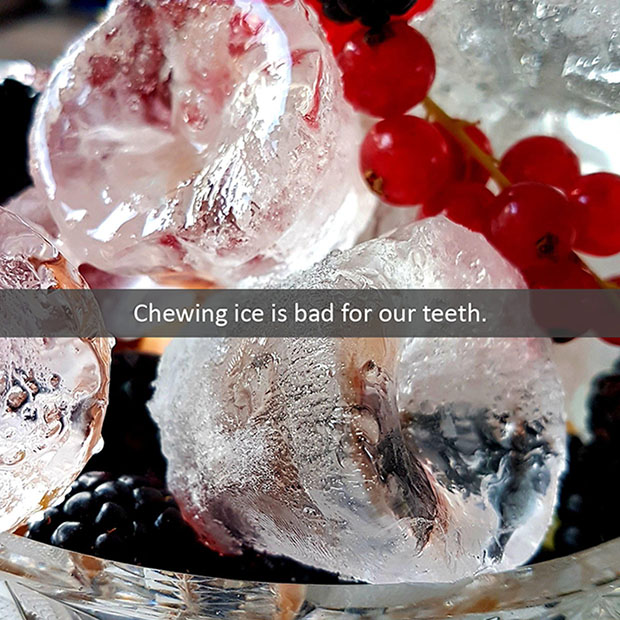Chewing Ice Is Bad for Our Teeth

We hear a lot that it’s bad to chew ice.
It’s because ice can do a lot of damage to our teeth and gums.
Extreme Temperature Changes Versus Enamel
Tooth enamel might be the strongest substance in the body, but it’s also brittle. The issue with ice isn’t just that it’s hard, it’s also that it’s cold. Extreme temperature changes cause tooth enamel to expand and contract, creating tiny cracks and weakening the overall structure. It’s the same thing that happens to pavement in places that get snow.
Gum Injuries and Tooth Damage
While weaker enamel can lead to tooth sensitivity and vulnerability to decay, ice also isn’t good for gum tissue. It’s so cold that it creates a numbing effect, which can make it difficult to notice if it causes an injury to the gums. It’s also hard enough to break or chip teeth.
Where Do the Cravings Come From?
Why crave ice if there are only downsides to chewing it? The scientific term for compulsive ice eating is pagophagia. It could indicate an eating disorder called pica (the compulsion to eat non-food items, or it could be related to iron deficiency anemia. The chill of ice stimulates blood flow, counteracting low oxygen levels in the brain, but that only treats a symptom of anemia, not the cause.
